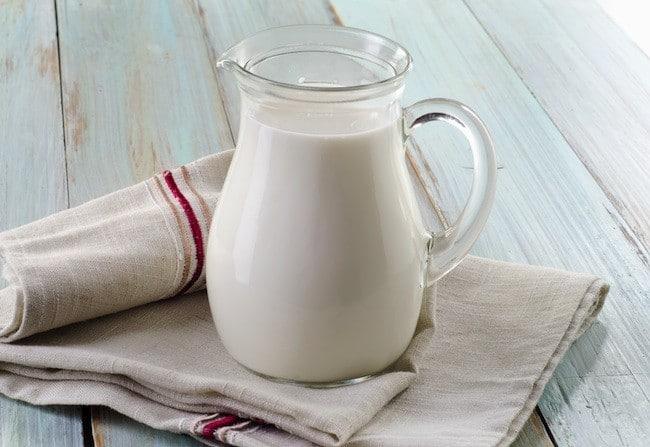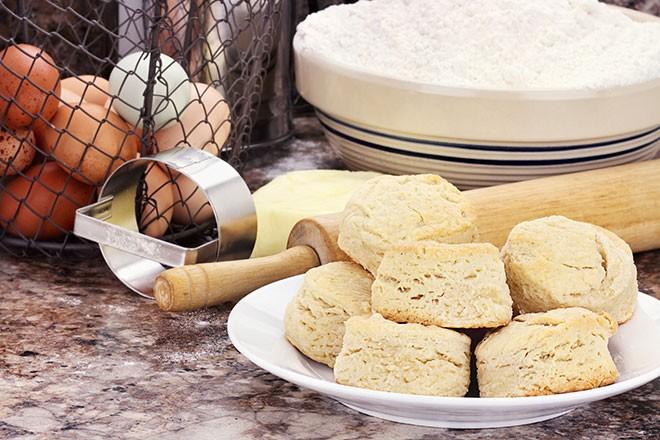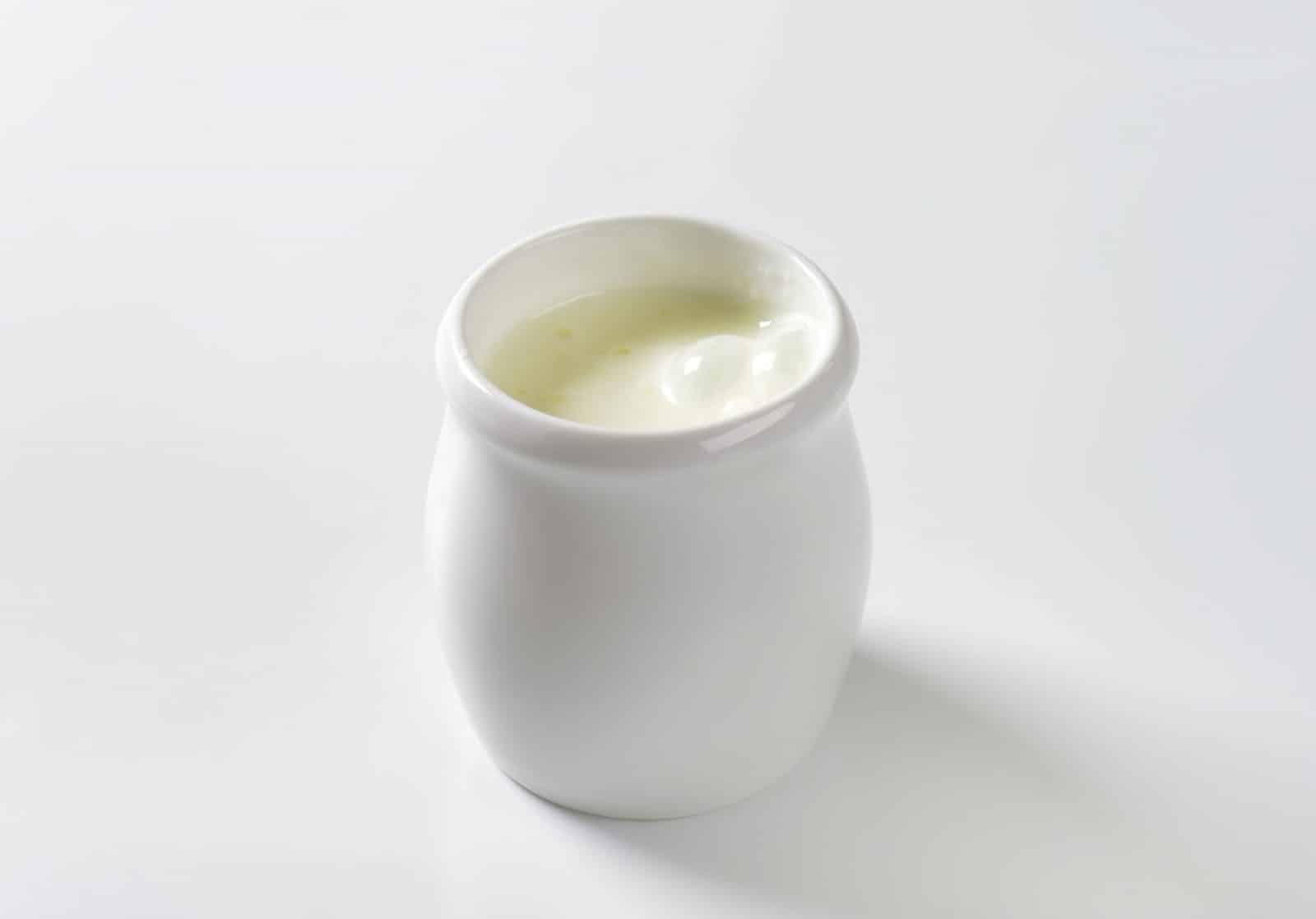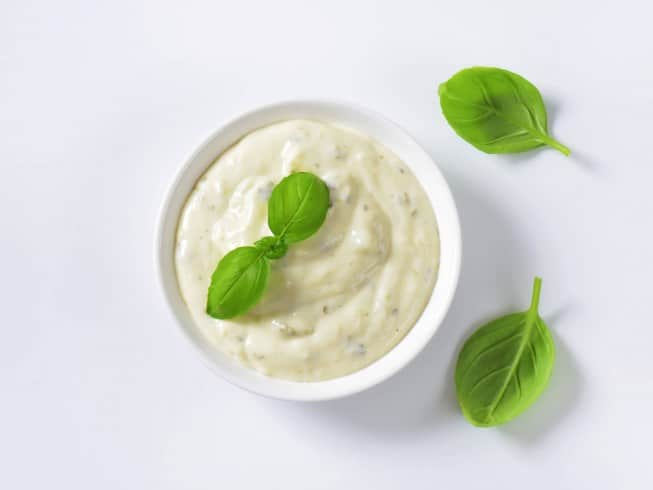Contents

The Differend Kinds of Buttermilk
There are two kinds of buttermilk: traditional buttermilk and cultured buttermilk.
1. Traditional Buttermilk
Traditional buttermilk or sometimes called as old-fashioned buttermilk is widespread in India, Pakistan, and Nepal. Traditional buttermilk is the liquid produced after the churning of the butter.

To make a traditional buttermilk, milk is allowed to stand for a period of time to allow for the separation of the butter and milk. During this time, fermentation of the milk occurs caused by the lactic-acid-producing bacteria that is naturally found in the milk. This produces lactic acid which causes the sour and tart taste of the milk.
Traditional buttermilk is found to be more beneficial as compared to cultured buttermilk.
2. Cultured Buttermilk
Cultured buttermilk is the kind of buttermilk that can be found in stores near you and is a common ingredient in recipes. A bacterial culture (either Lactobacillus lactis or Lactobacillus bulgaricus) was introduced to the milk (sometimes, low-fat milk). The milk is then pasteurized to eliminate pathologic bacteria that may pose health risks. To simulate the product, yellow flecks of butter are added.

Compared to the traditional buttermilk, cultured buttermilk has more tart and is more thick and viscous.
Best Qualities of Buttermilk
Characteristically, buttermilk is tart and thick because of the acid present in the milk. The fermentation of the milk by lactic acid-producing bacteria (ex. Lactobacillus lactis) causes the production of lactic acid from the breakdown of lactose. Lactose is the sugar present in the milk.
As more lactose breaks down and more lactic acid is produced, the pH of the milk decreases. The increase in acidity of the milk causes the protein component of the milk, Casein, to precipitate, causing the milk to curdle-- thus, making the milk thick.
Typical Uses of Buttermilk - When And Where
Aside from being a drink or can be drunk straight, buttermilk has different uses. Buttermilk can be used in baking. The acidic property of buttermilk will combine with baking soda (which contains sodium bicarbonate) to produce carbon dioxide, a gas which helps to leaven pieces of bread and cakes.
Though it is not as popular as before, buttermilk is an ingredient in some recipes because of its sour and tangy taste. It can be added to mashed potatoes and salad dressing.

In Southern India, it is a tradition that buttermilk is mixed with rice and consumed at the end of the meal. Buttermilk added with water, curry leaves, asafoetida, and sugar or salt serves as a thirst quencher to visitors in some festivals.
The benefits of buttermilk have also found its way in the cosmetology world. Other than nourishing and soften the skin and acting as a deep-cleansing agent, buttermilk can also help to treat sunburn.
Main Health Benefits of Buttermilk
Buttermilk is sometimes referred to as “Grandma’s Probiotic”. A Probiotic is a live microorganism (either bacteria or yeast) that offers health benefits to the host when taken in sufficient amounts. Lactic acid helps prevents alimentary canal infections because of its effectiveness in washing down fats and oils that stick to the linings of the stomach. Aside from this, regular consumption of buttermilk helps in eliminating germs and bacteria (let’s say, bad bacteria), This, in turn, aids in digestion.
In the intestines, this probiotic food helps the good bacteria to populate. It improves immune functions and prevents diarrhea.
Aside from being a probiotic food, buttermilk is rich in macronutrients and micronutrients. A serving size of 100 grams contains 40 calories, 3.3 grams of protein, 4.8 grams of carbohydrates and only 4 milligrams of cholesterol. It is also lower in fat as compared to other milk.

Buttermilk also has different minerals, electrolytes, and vitamins present. For example, a serving size of 100 grams contains 116 milligrams of calcium (12% of the daily value or DV), 89 milligrams of phosphorus (9% of the DV), 151 milligrams of potassium (4% of the DV), 47 IU of Vitamin A (1% of the DV), 1 milligram of Vitamin C (2% of the DV) and 0.22 microgram of Vitamin B12 (4% of the DV).
Calcium is essential for the maintenance of strong bones and for muscle and nerve function. Phosphorus is important for the maintenance of cells and tissues. Potassium plays an important role in heart function as well as in both skeletal and smooth muscle contraction. Vitamin A, also known as retinol, plays a role in good vision. Vitamin C helps in the absorption of iron and is an antioxidant that fights against free radicals. Vitamin B12 is crucial for the proper formation of red cells, DNA synthesis, and neurological functions, thus helping to combat anemia and stress. These are some of the minerals and vitamins present in buttermilk.

When dehydrated, a glass of buttermilk is a good remedy. Buttermilk, aside from containing electrolytes like calcium and potassium, buttermilk is 91-92% water. It helps to maintain water balance in the body.
People who are lactose-intolerance can opt to drink buttermilk when they need calcium for bone growth. The lactose content of buttermilk is lower as compared to other milk. This is partly because lactose has been consumed by the naturally-occurring bacteria found in the milk.
Buttermilk can help in washing down the spices after consuming a spice-rich meal. Thus, buttermilk is considered the best remedy for an irritated stomach.
Buttermilk Substitutes
If you want to make a bread, but you don’t have a buttermilk as an ingredient, don’t worry. There are few substitutes of buttermilk that you can make in case you don’t have one in your fridge. Some of them can just be found on your shelf. You can, as well, create your homemade buttermilk. Here are some of them:
1. Yogurt and Milk
Add ¾ cup of plain yogurt with ¼ cup of milk. Stir.

2. Milk and Lemon Juice
Add 1 tablespoon of lemon juice or white vinegar to your 1 cup of milk. Stir. Stand for 5 to 10 minutes. Whisk for 5 seconds. The mixture is slightly thickened and curdled when it is ready. Non-dairy milk can also work with this substitute.
3. Watered-down Sour Cream
Mix equal parts of sour cream and water.
4. Cream of tartar and Milk
In one cup of milk, add 1 ¾ of cream of tartar. Mix.
4. Yogurt and Almond Milk
You can also use non-dairy milk such as Almond Milk or soy milk. Add ¾ cup of yogurt with ¼ cup of almond milk or soymilk. Then add about ½ teaspoon of vinegar; then mix.

How Long Does Buttermilk Last In Thje Fridge?
Buttermilk lasts for about 7 to 14 days beyond the expiration date indicated in the pack. This should be stored properly at 40 degrees Farenheit because buttermilk placed in warm temperature increases the bacterial activity. This results to the buttermilk becoming even tangier and the taste may not be palatable anymore.
Freezing buttermilk, however, is not recommended. Though it may be stored in 3 months with this kind of method, once the product is thawed from the freezer, there is an alteration of the texture and color. But still it is safe to consume. Buttermilk should be kept from light and its container must be tightly closed.

